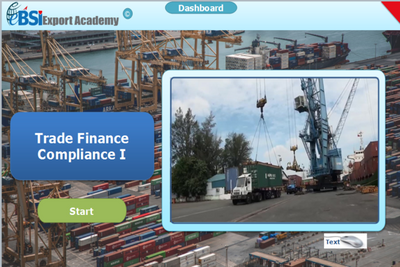Covering Risks in International Trade – Credit Insurance for Exporters Part II
Trading on credit terms carries an ever-present underlying risk for those trading overseas – from customer insolvency and default to economic and political upheavals. Many companies generally accept this as the essential price for expansion and for accessing new markets. However, by seeking to maximise these opportunities, many are taking wholly unnecessary gambles.
In the first part of this article we looked at :
- The Risks of Trading on Credit
- The Global Economy
- The Local Economic Climate
- The Political Situation
- The Business Sector
- The Consequences of Non-payment
- and How to Manage the Risk
Now that we have had a look at the background to the Export Credit Insurance Decision, let’s now take a look at the tools available to Exporters from an Export Credit Insurer.
Types of Credit Insurance
Exporters can select from different types of credit insurance policies, depending on their requirements, including:
Whole turnover cover
Covers the whole of a policy holder’s business and enables them to grant credit up to a discretionary limit. Anything above this limit must be agreed in advance. The annual policy premium rate is based on declared turnover.
Good for: businesses seeking to expand or target new markets, domestically and overseas. Whole turnover policies offer peace of mind as they include credit assessment and can therefore be used to monitor existing customers and ‘prospect’ new ones. Credit insurance also represents added security for the sales ledger and often enables companies to access increased levels of trade finance from their bank.
Critical customer cover
Enables the policy holder to insure against a small number of named customers and accept the risk for the remainder. The policy premium is normally based on the amount of debts outstanding among the named customers at any one time.
Good for: companies that derive a high proportion of their turnover from a few key customers and seek cost-effective cover. The company decides its own level of exposure and only pays for the cover it requires.
Specific risk cover
Insures individual target risks or a large single contract. Premium is likely to be calculated as a rate on contract value although it can also be the annual volume of turnover for that customer over the lifetime of the policy.
Good for: companies which depend on a principal customer, once-off contracts or who have just won a significant new customer.
Export Credit Insurance
Covers companies against the various risks attached to trading overseas, mainly OECD countries, but also emerging markets such as Eastern Europe. Export policies will typically protect companies from the effects of currency inconvertibility, the failure of a bank to honour a letter of credit, and the confiscation or nationalisation of overseas plant or equity.
Good for: companies seeking to develop into export markets, or exporters wishing to target new markets.
Credit Insurance for Multinationals
Rather than a single, ‘one size fits all’ approach, or allowing each regional office the freedom to negotiate its own policy, many of today’s progressive global organisations opt for a company-wide policy which benefits from group purchasing power but which has the flexibility to take account of local variations.
In this scenario, Group Headquarters can set the parameters – policy requirements such as progress reports, claim notification deadlines, the nature of risks covered – while the local office has the benefit of a more responsive service, dealing with people who speak the language, understand the local business culture and can meet with them face-to-face to discuss any issues. Realistically, such policies can only be delivered by big credit insurance companies such as Coface and its larger competitors.
Administering a Credit Insurance Policy
Evaluating risk
Before an insurer will actually agree cover in the first place, they need to be assured that its potential client is a good risk who observes minimum standards of efficiency in credit control.
Typically, the credit insurer will look at a client’s books to establish turnover, the credit period, days sales outstanding, and previous experience of bad debt. They will analyse the company’s sales ledger and its aged debt, investigate the trade sector to which the company belongs, its markets, and the status of principal customers.
Premium
Premium is generally calculated as a percentage of turnover (for simplicity) or – more accurately – by insured turnover. Some insurers may also charge as a percentage of outstanding debtor balances to encourage efficient credit control. Premium can also be charged as a fixed amount with no adjustments.
Companies should check the terms of their policy to see what is covered by their premium as some of today’s more sophisticated policies have an all-inclusive premium which also covers pre-legal and legal costs.
Setting credit limits
This is a key element in the successful administration of any policy as it sets the parameters of risk for both credit insurer and its client. Companies must formally request a credit limit for new buyers – directly, or through their broker – as well as any increase of existing limits. At the same time, the insurer will constantly monitor overdue buyers and review their credit limits to ensure they are not exposed to excessive risk.
Most credit insurance policies stand or fail by this process – the success stories being where underwriters and company credit managers work closely in partnership to monitor buyer risk and ensure that each is notified of any problems. Companies which fail to abide by credit limits will invalidate their policy and subject themselves to unacceptably high risk.
Making a claim
The golden rule is that companies must ensure that they notify their credit insurer of non-payment within the period stipulated by the policy. This enables the credit insurer’s claims department to chase payment and investigate the defaulter. In most cases where claims are rejected, it is because the policy holder has given their customer additional time to pay or forgotten to notify their insurer.
Most professional credit insurance companies will pay promptly and will not make excuses. Coface UK, for example, guarantees payment 30 days from valid claim in insolvency cases.
Holistic Credit Management
Credit trading is regarded as normal business practice and essential to oil the wheels of international commerce. Indeed, the credit provided by suppliers represents double the amount lent to customers by their banks. Yet the failure of many companies to adhere to even the most rudimentary credit management processes is exposing them to potential disaster.
Credit insurance cover enables companies to withstand instances of non-payment while helping to minimise the possibility of this occurring. It places companies in a strong position to target new markets without additional risk. It acts as a guarantee of a company’s financial security, critical to obtaining additional finance.
In short, credit insurance – as part of a holistic credit management policy – is a sensible strategy for any expanding export business.
Bob Frewen
CEO
COFACE Ireland
bob_frewen@coface.com






